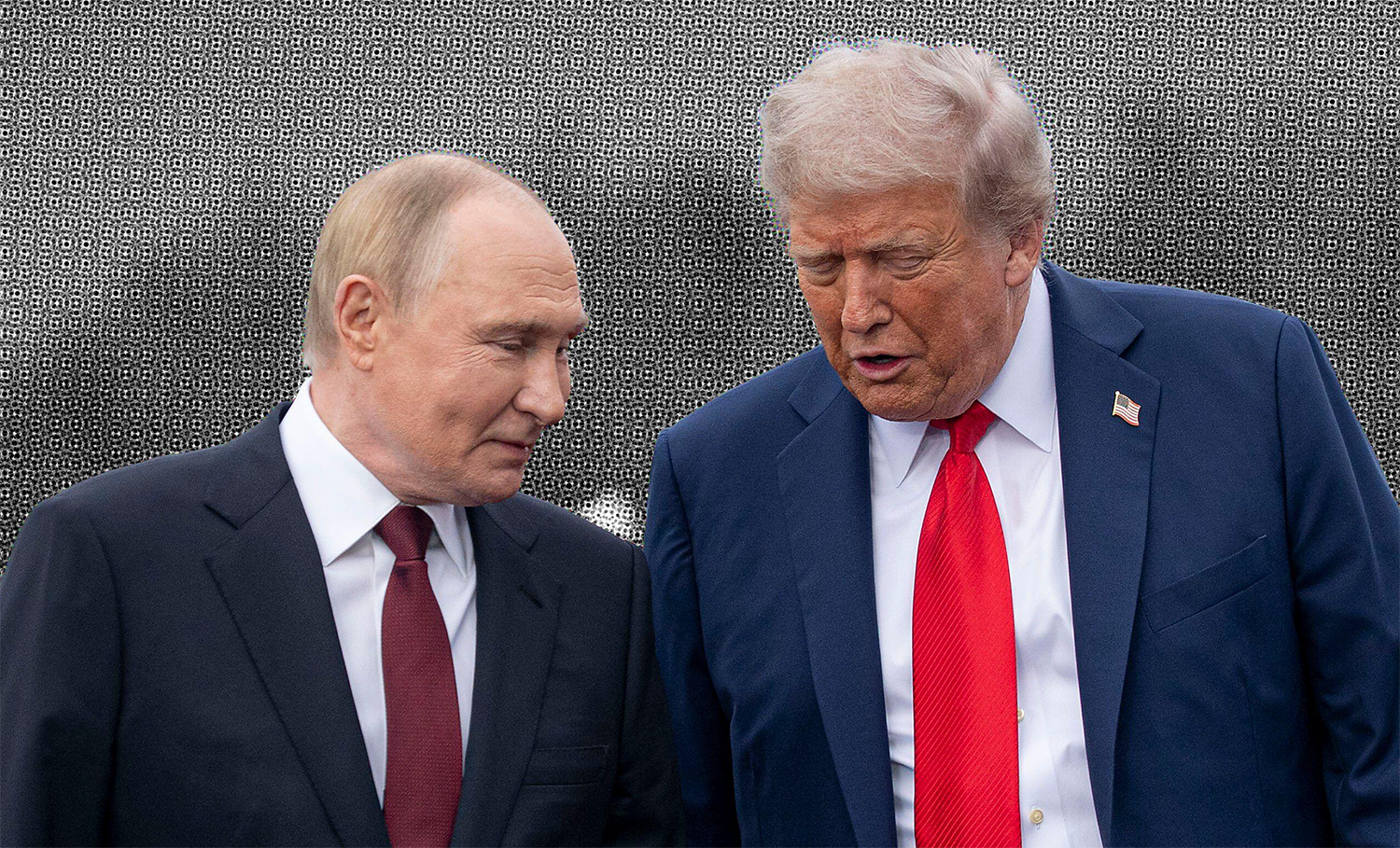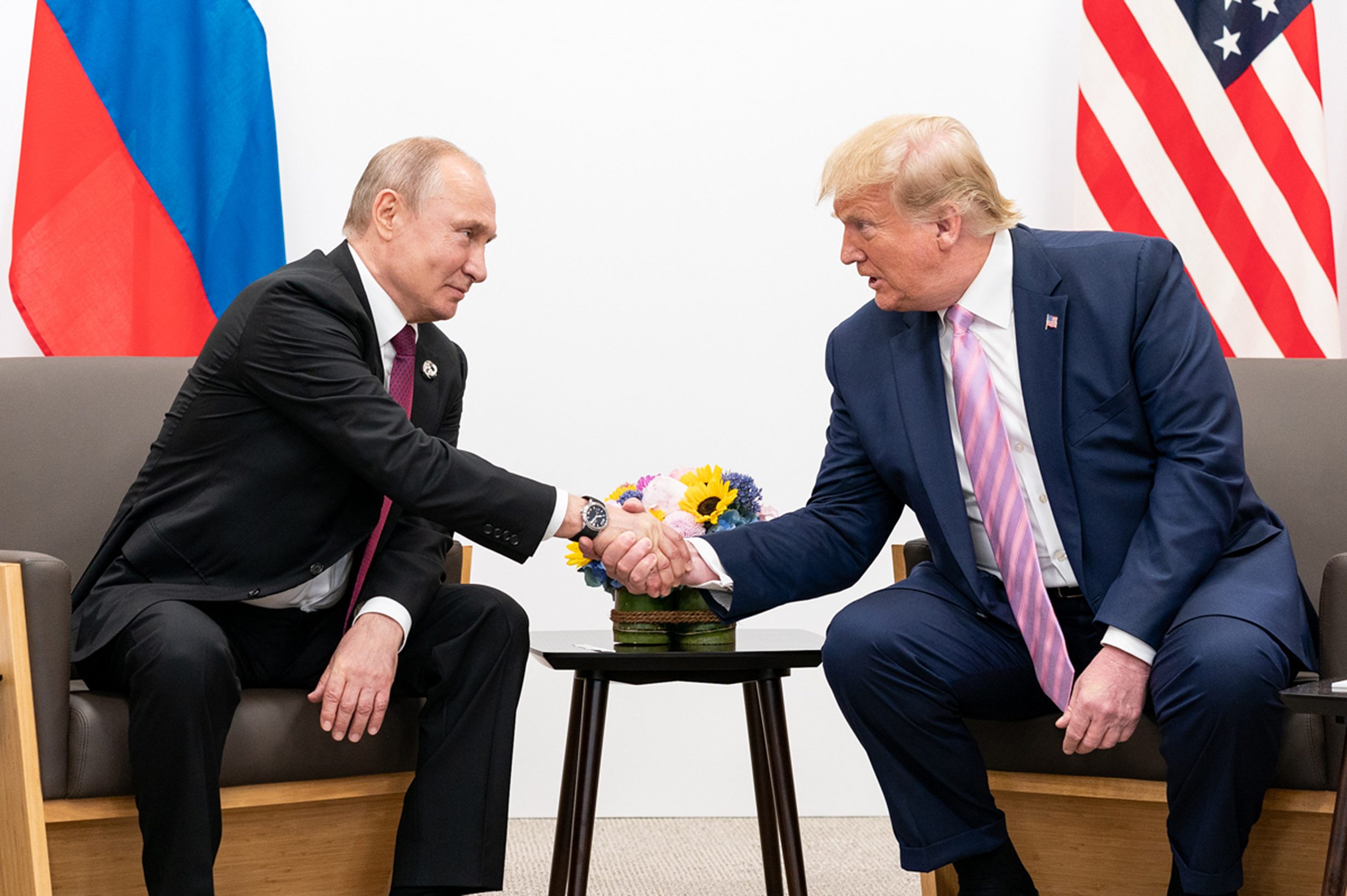
Read our Digital & Print Editions
And support our mission to provide fearless stories about and outside the media system
The summit between Donald Trump and Vladimir Putin in Anchorage, Alaska, on August 15, 2025, ended without progress on a ceasefire or a long-term peace in Ukraine. Trump failed to impose new economic sanctions after the summit. But while there was no breakthrough at the meeting, the possibility of a deal that could reshape global energy and extend the war lurked in the background largely unnoticed.
The Kremlin often diverts attention through its use of a tactic called ‘distraction or deflection’. In this case the red carpet, military flyovers, and conspiracy theories about Putin’s doubles drew the spotlight away, while leaving the real story overlooked.
Sanctions Envoys in Alaska
Clues to the real purpose of the summit could be found in the fact that both sides brought with them finance-heavy delegations. Trump was joined by Treasury Secretary Scott Bessent, who brought a copy of the mineral deal to President Zelenskyy in February 2025, pushing for it to be signed without security guarantees, and Commerce Secretary Howard Lutnick. Putin included Finance Minister Anton Siluanov, who oversees Russia’s response to sanctions, and Kirill Dmitriev, head of the Russian Direct Investment Fund (RDIF).
The RDIF was designed to attract Western capital into Russian projects and has often served as a back channel for high-level financial diplomacy. Dmitriev has long served as a financial envoy for the Kremlin. In January 2017, Dmitriev met with Erik Prince, Blackwater PMC founder and Trump donor to work on liaison between Trump’s transition team and the Kremlin and spoke with Anthony Scaramucci, senior aide to then President-elect Donald Trump, at the World Economic Forum in Davos.
By bringing Dmitriev to Anchorage despite sanctions, Moscow signalled that it expects sanctions relief to be part of the deal. The RDIF has been under US sanctions since 2022. If the RDIF regains access to global markets, Russia could finance infrastructure, technology, and energy expansion with Western capital again.
ExxonMobil Back in Play
Putin issued a decree on August 15, the same day as the summit, allowing the US oil giant ExxonMobil to reenter a major Russian state-owned oil project on Russia’s Pacific coast.
Sakhalin-1 is run by a Russian state-owned Rosneft entities affiliates, the state-owned giant headed by Igor Sechin, a close Putin ally. ExxonMobil held a 30% stake but pulled out in 2022 when sanctions tightened after the Russian full-scale invasion in Ukraine. ExxonMobil, and other foreign investors can return on one condition: help lift sanctions on Russian oil.
The decree requires foreign shareholders to work towards lifting Western sanctions in order to reclaim their stakes, according to Reuters. They must also arrange contracts for foreign-made equipment and transfer funds into Sakhalin-1 project accounts.
Rosneft, Trump, and the Steele Dossier
The Sakhalin-1 has a background story connecting Rosneft and US politics. In 2011, ExxonMobil’s then-CEO Rex Tillerson signed a $500 billion partnership with Rosneft, covering projects from Sakhalin to the Arctic. Putin presided over the deal personally. The same year, Rosneft and Exxon proposed building a $15 billion plant in Russia’s Far East by 2018 and signed the first deal as part of a “Strategic Cooperation Agreement” on the exploration and exploitation of energy sources in the Arctic and Black Sea, US, and Canada, including major discoveries like a billion-barrel find in the Kara Sea. Exxon quit the ventures in 2018 following Western sanctions over Crimea, leaving Rosneft with massive debt. Russia lost access to modern technologies to unlock the $8.2 trillion reserve. In 2016, Trump appointed Tillerson as Secretary of State. In March 2022, after Russian full-scale invasion, Exxon stopped its Sakhalin-1 operations.
The Steele dossier, published in 2017, alleged that in 2016 Rosneft’s Igor Sechin offered Trump associates a 19% stake in the company—worth around $11 billion—in exchange for lifting sanctions if Trump won. The report claimed campaign adviser Carter Page discussed the idea in Moscow. In December 2016, the sale of 19.5 percent of Rosneft to foreign investors was announced, matching the figure in the dossier. The allegations were never proven and investigations found no conclusive evidence of collusion.
Billions for Moscow’s War Budget
The potential return of ExxonMobil to Sakhalin-1 could change global oil dynamics.
For ExxonMobil, regaining access to the project might revive its $500 billion Arctic exploration deal with Rosneft lost after the first sanctions were imposed on Russia in 2014 after the annexation of Crimea. This deal would increase environmental risks in polar regions.
For Russia, restoring Sakhalin-1 to full production, about 220,000 barrels a day, could generate billions of dollars in new revenue for Moscow. It would strengthen Russia’s economy and allow for the continued war of aggression. Oil and gas provide almost a third of Russia’s state revenue and more than 60% of exports. If sanctions are lifted, Sakhalin-1 revenues would support Russia’s war budget, paying for more drones, missiles, and troops. Sanctions relief would reduce Russia’s dependence on China and India buying discounted crude since 2022.
An additional 220,000 barrels a day would also impact global prices. Western oil companies might follow ExxonMobil’s lead if Washington signals a green light. Europe would then face pressure: stay aligned with US policy or risk losing competitiveness. Diplomatically, if the US moves to ease sanctions, it could fracture Western unity further, benefiting the Kremlin.
Kyiv continues to target Russian refineries with drones but the danger of the revival of Sakhalin-1 under ExxonMobil is clear. The project would pump billions into Moscow’s budget, offsetting the damage Ukraine has inflicted on Russia’s energy industry. With that money, Russia could sustain or even escalate its war effort.
ENJOYING THIS ARTICLE? HELP US TO PRODUCE MORE
Receive the monthly Byline Times newspaper and help to support fearless, independent journalism that breaks stories, shapes the agenda and holds power to account.
We’re not funded by a billionaire oligarch or an offshore hedge-fund. We rely on our readers to fund our journalism. If you like what we do, please subscribe.
Ignored Warnings
The deal is far from guaranteed. Trump’s administration’s reluctance to enforce sanctions could provoke strong opposition in Congress, where support for Ukraine still cuts across party lines. Germany, Poland, and other states prioritising energy security could block any move towards lifting EU sanctions. ExxonMobil must weigh the financial gains against reputational and legal risks, especially in Europe.
Whether or not ExxonMobil reenters Sakhalin-1, the message is clear if unheard: Russia is seeking financial normalization with the West and the fate of Ukraine is not the focus of the negotiations.
In that sense, the Alaska summit is a dark déjà vu: a spectre of lifting sanctions on Russian oil is haunting the globe. If left unrecognized, it risks paving the way for Moscow to expand its reach far beyond Ukraine.


